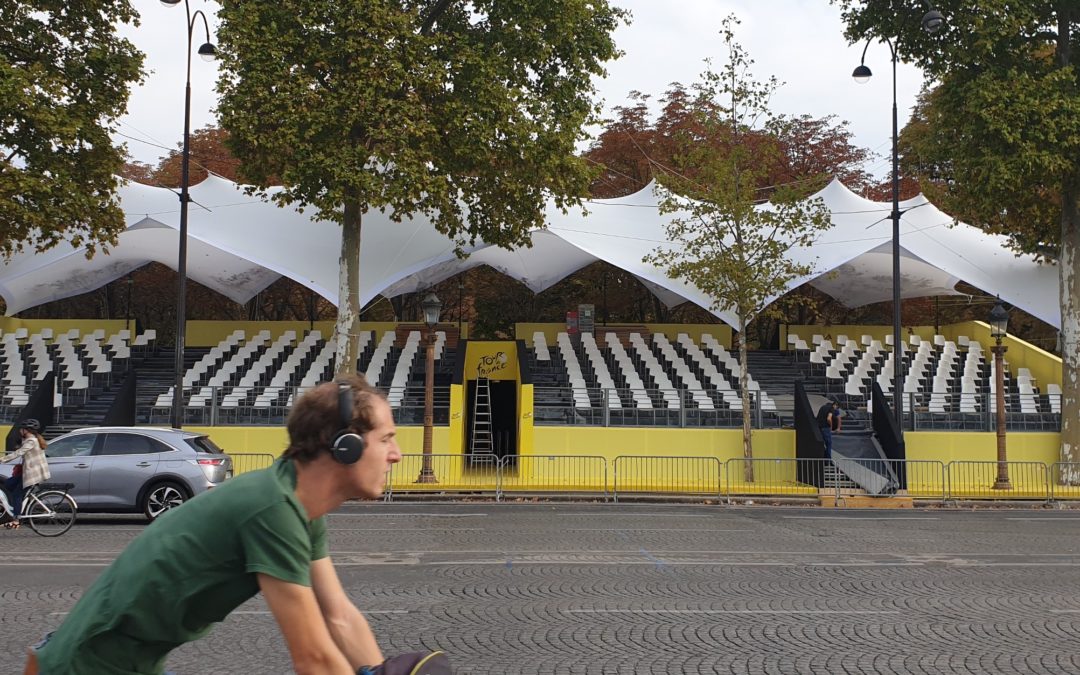How do you say mixed messages in French?
On the one hand, the government here, desperately concerned about a record surge in COVID-19 cases, is telling older people to, in the words of the health minister, “protect yourselves even more.” Parisians should “rethink private gatherings,” local authorities say. Some cities, such as Marseille and Nice, are facing the possible closure of bars and restaurants and a ban on public gatherings.
The government’s other message? Get out of the house and enjoy yourself this weekend. You can attend the final stage of the Tour de France on Sunday, lining the Champs Elysées with 4,999 other fans. Starting Monday, you can go to the Roland Garros (French Open) tennis tournament, where as many as 5,000 spectators will be allowed into each of the the largest courts. (More on those events later.)
Or you can participate in the country’s annual celebration of its national heritage all weekend, across the nation. Officials are literally asking people to go to this one. “I want to deconstruct culture so it is for everyone,” wrote Culture Minister Roselyne Bachelot-Narquin, in an obvious reference to the 56-day lockdown that closed France in the spring, in a welcome message on the ministry web site for the occasion. More than 160 sites are open for visits.
The Journées du Patrimoine (Heritage Days) are usually a highlight of the fall. On the third weekend of September, institutions across France – and Europe – open their doors to visitors. People stand in line for hours to see the inside of the presidential Elysée Palace, or the upper and lower houses of the legislature, or the prime minister’s residence (Unlike in the U.S. those places don’t allow the public in during the year.). French flags fly all along the Champs Elysees to fête the occasion, including this year.
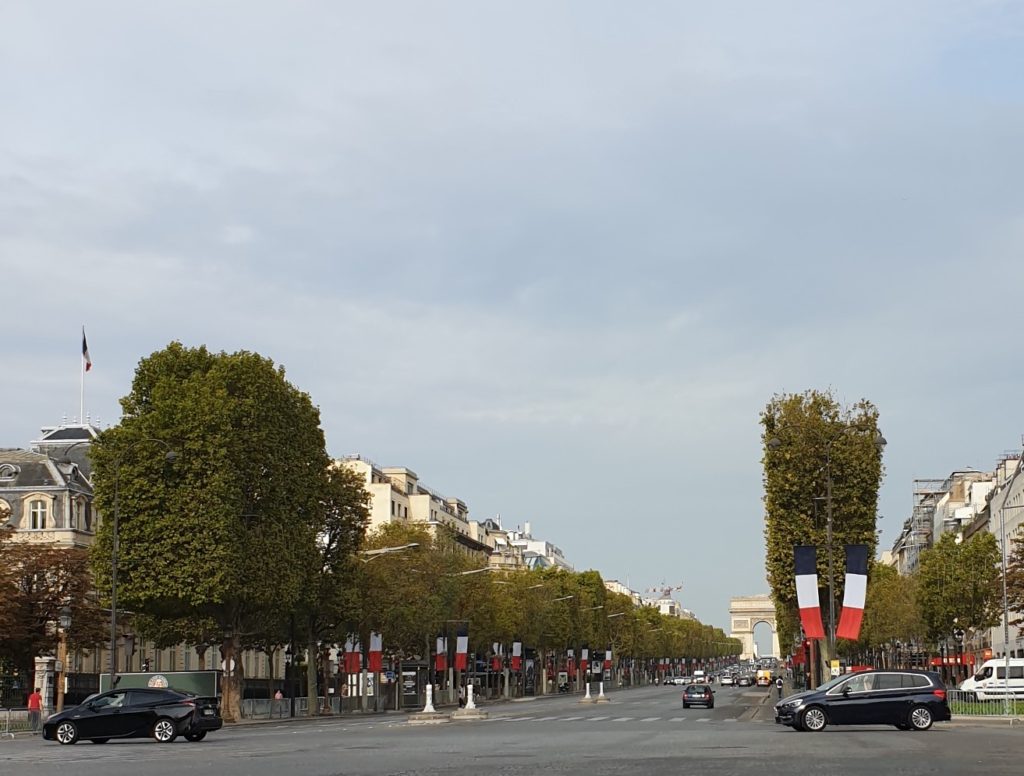
I used to gripe that the French government was just allowing the public into places they ought to have the right to see all during the year. But over the course of the 37-year-old event, hundreds of other establishments, public and private, have jumped in. Charlie and I have visited the workshop of a famous leather designer in our neighborhood, for instance, and sat in an architecturally remarkable auditorium at a nearby music school. In normal times, you can explore the bowels of the Métro or marvel at the treasures of the Egyptian Embassy.
And I always try to visit the Paris headquarters of the Garde Républicaine, the ceremonial troop whose cavalry regiment marches in every Bastille Day Parade and whose history goes back to 1750. The horses are available for inspection – no patting! — and the officers do training rides during the day. It’s a horse-lover’s paradise.
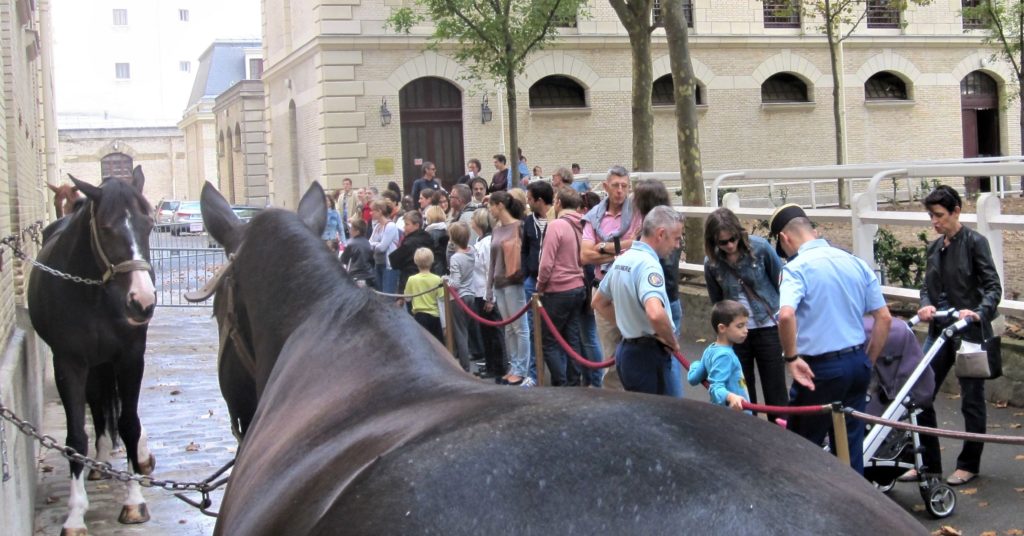
Sadly, the Garde canceled its participation this year and, frankly, the government should have scotched the whole weekend. (Some cities, including Bordeaux, have bagged it, but Paris is all in.) Even though most events, such as a visit to the gardens of the Elysée, are outside, they still bring together lots of people into close spaces. And mask-wearing hasn’t improved here since I last wrote about it.
In front of Notre-Dame Cathedral Saturday, where a wonderful display of the post-fire reconstruction was running, crowds of people gathered to watch the workers hammer logs and forge metal parts. The spectators wore masks. The workers sometimes didn’t.
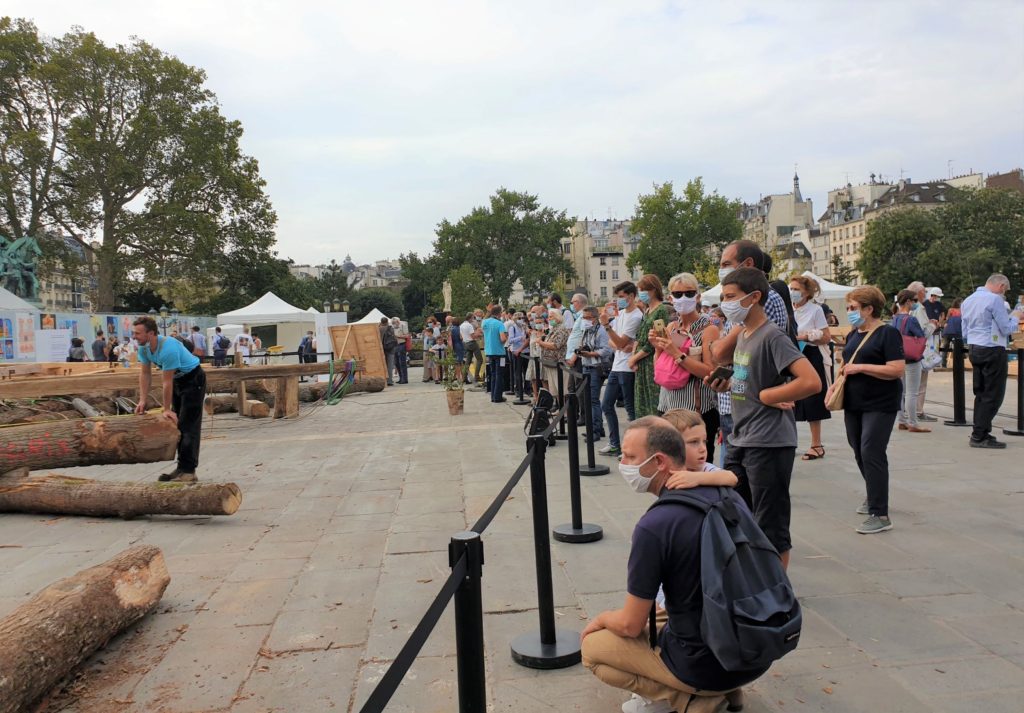
It’s a reflection of the general conundrum that President Emmanuel Macron and his government are facing. The spring lockdown succeeded in damping down the virus, to fewer than 500 cases a day. But it also devastated the economy, and the government is counting on a rebound now that the country has reopened. With a record 13,215 new COVID-19 cases on Friday and 13,498 on Saturday (a higher rate even than in the U.S.), officials are doing little more than flapping their hands and telling the prefects of the various regions to come up with a plan.
Testing, a centerpiece of the government’s COVID strategy, isn’t going well either. Even though the number of tests administered has grown to 1.2 million a week from 300,000 at the end of July, demand is outstripping supply. Le Parisien says people have to wait as long as 10 days to get their results, and often stand in line for five hours or more. There were at least 50 people waiting outside this lab on Avenue Victor Hugo on Saturday.
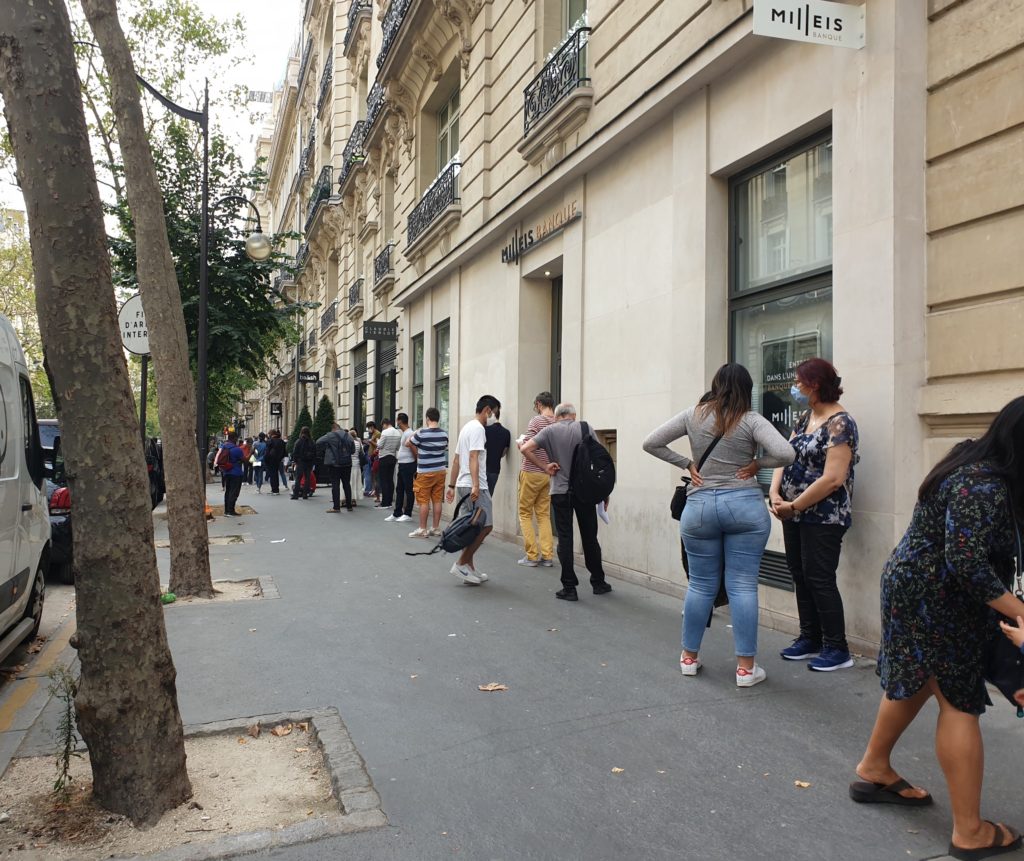
Yet Macron slapped down Health Minister Olivier Veran when the minister asked last week for permission to impose more restrictive measures, the French press has reported. The president’s recent mantra is, “We have to learn to live with the virus.”
As John Lichfield writes in The Local, “Since mid-June, France has relaxed; taken its eye off the ball; gone on holiday from Covid-19. This applies to many French citizens and residents but also to the government.” He says very rightly that it’s not an easy choice. Deaths and hospitalizations, though rising, aren’t nearly as high as they were in the spring. There are reasons to try to balance health and the economy. But, Lichfield says, “The danger is that the government’s approach will fail on both counts.”
Inviting millions of French people to leave home and visit crowded places, outdoors and indoors, doesn’t help either of those goals. The Tour de France is limiting the number of spectators on the Champs Elysées, but even the seats on the viewing stand are quite non-distant. Not to mention all the people coming and going from the race site — taking public transportation, jostling on the streets, visiting nearby cafes and restaurants.By late Sunday, the riders were entering Paris through lines of fans three deep on either side of the streets.
Similarly, the Roland Garros organizers promise a very strict mask, distance and one-way path protocol. But the plan to organize the space into three sites still allows 5,000 masked spectators on the premises each day of the final rounds. The event was postponed from last spring, when the lockdown was underway. A lockdown that was imposed when the number of daily new cases was less than half of what it is now.
La situation sanitaire en Région Ile-de-France a conduit la Préfecture de Police de Paris à limiter le nombre de spectateurs pouvant accéder au stade Roland-Garros pendant le tournoi, à 5000 par jour sur l’ensemble du site de 12 hectares.#RolandGarros
— Roland-Garros (@rolandgarros) September 17, 2020
Then on Oct. 3, Paris is forging ahead with its annual “Nuit Blanche,” an all-night festival of music and parties. This year it will be different, the city says. No crowds on the banks of the Seine or the canals. The 100 works of art, inside and outside of participating museums and institutions, will be seen only by people in groups of 10. But what about the all-night-partyers who don’t go to the museums? How will authorities prevent young people from doing what they always do, hanging out in close quarters throughout the city?
If young people don’t get the message, it’s because what they hear are (to answer the question raised at the beginning), messages contradictoires. Or messages flous – vague messages. That’s not what France needs right now.
